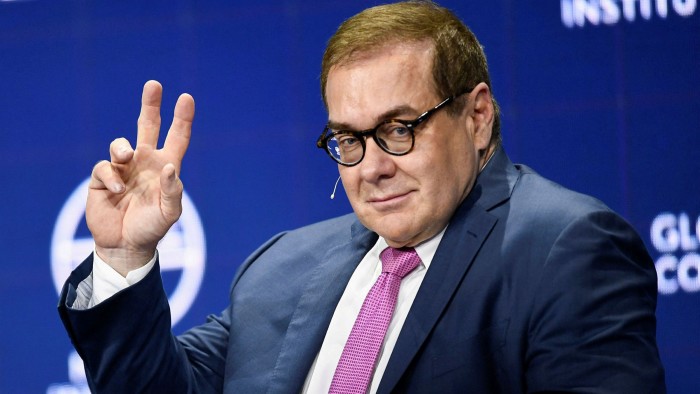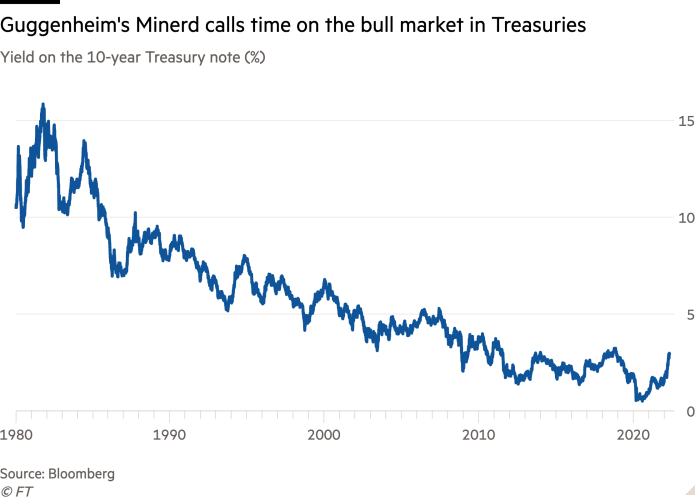Bond bull market ‘has come to an end’, Guggenheim’s Minerd says

Roula Khalaf, Editor of the FT, selects her favourite stories in this weekly newsletter.
Guggenheim Partners chief investment officer Scott Minerd called time on the long-running Treasury bull market, warning interest rates could “trend higher for a generation” as the Federal Reserve tightens monetary policy to combat inflation.
The comments follow an intense sell-off in the $23tn US Treasury market, the backbone of the global financial system, sparked by hawkish rhetoric from Fed officials. The yield on the benchmark 10-year Treasury note this week hit 3 per cent for the first time since 2018, having more than doubled since the end of 2021.
The US central bank on Wednesday is set to raise interest rates for the second time this year, with investors and analysts expecting a bumper half percentage point increase — larger than the typical quarter-point raise — for the first time since 2000.
“I have to throw in the towel,” Minerd, who helps oversee $325bn at Guggenheim, said in an interview. “The long bull market run in bonds has come to an end.”
It marks a sharp reversal for Minerd, who said a year ago that he expected rates to fall and potentially even turn negative in the US. As recently as March he told CNBC that he thought rates were in the neighbourhood where he would expect them to “peak out”.

He said on Tuesday that he does not expect rates to “skyrocket higher” immediately, but that they could “chop” around before rising again.
His concern now is that rather than allowing the market to determine lending conditions, the Fed will continue to lift interest rates, pushing the US economy into recession.
“Rather than following a sound policy . . . we’ve decided we’re going to raise rates and shrink the balance sheet so the Fed will have inflation credibility,” he said. “My concern is as we roll over and we see inflation starting to slow, the Fed will . . . not recognise where the neutral rate is and we’ll ultimately have a collision.”
The neutral rate refers to an ideal level for interest rates at which they contain inflation while still allowing the US to maintain full employment.
Minerd warned policymakers could not know how tight conditions already were. Companies are having a harder time raising capital, with gauges of US financial conditions back to pre-coronavirus pandemic levels.
Tighter policy from the Fed could “induce a financial accident” and he pointed to a sell-off in the $46tn US stock market as a “likely place” for that to occur.
“We have never brought inflation down by more than 2.5 per cent without inducing a recession,” he said.
“I don’t think they’re setting themselves up for a soft landing,” he said, adding: “There’s an inevitability to a recession,” with some European countries “sliding” towards one as well.
For a brief period this year, the policy-sensitive two-year yield had risen above the 10-year yield — a yield curve inversion — one of the most widely used and reliable indicators of an impending recession. That suggests investors believe monetary policy will tighten faster than the US economy can handle, and tip it into recession sometime in the coming two years.
The end of the bond bull market would have significant implications for other markets. The uptick in Treasury yields has lifted borrowing costs for companies and also driven mortgage rates higher. The rally in US stocks to record levels in 2021 was built on low interest rates, and the surge in yields has begun to hit performance on Wall Street.
Comments